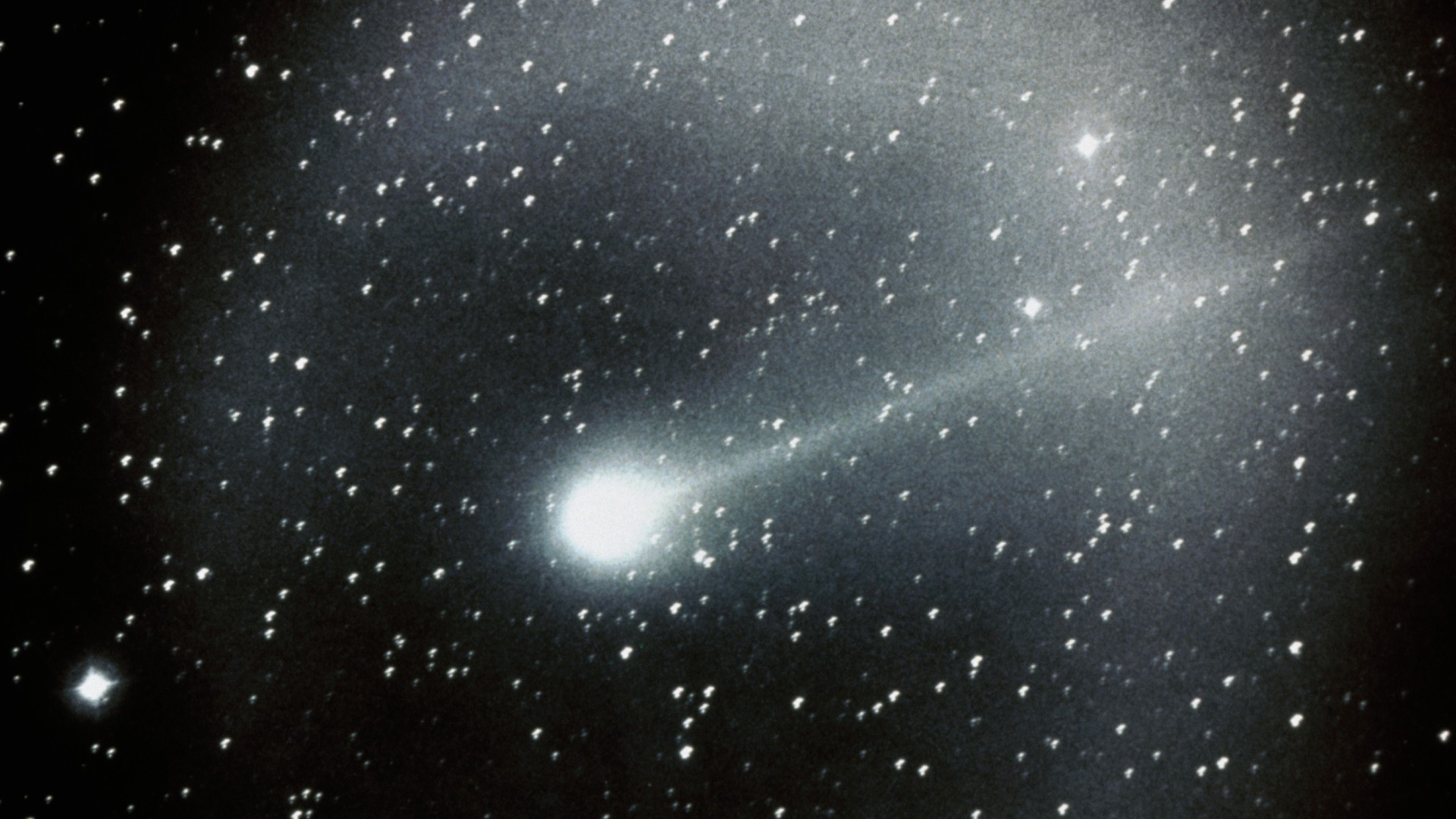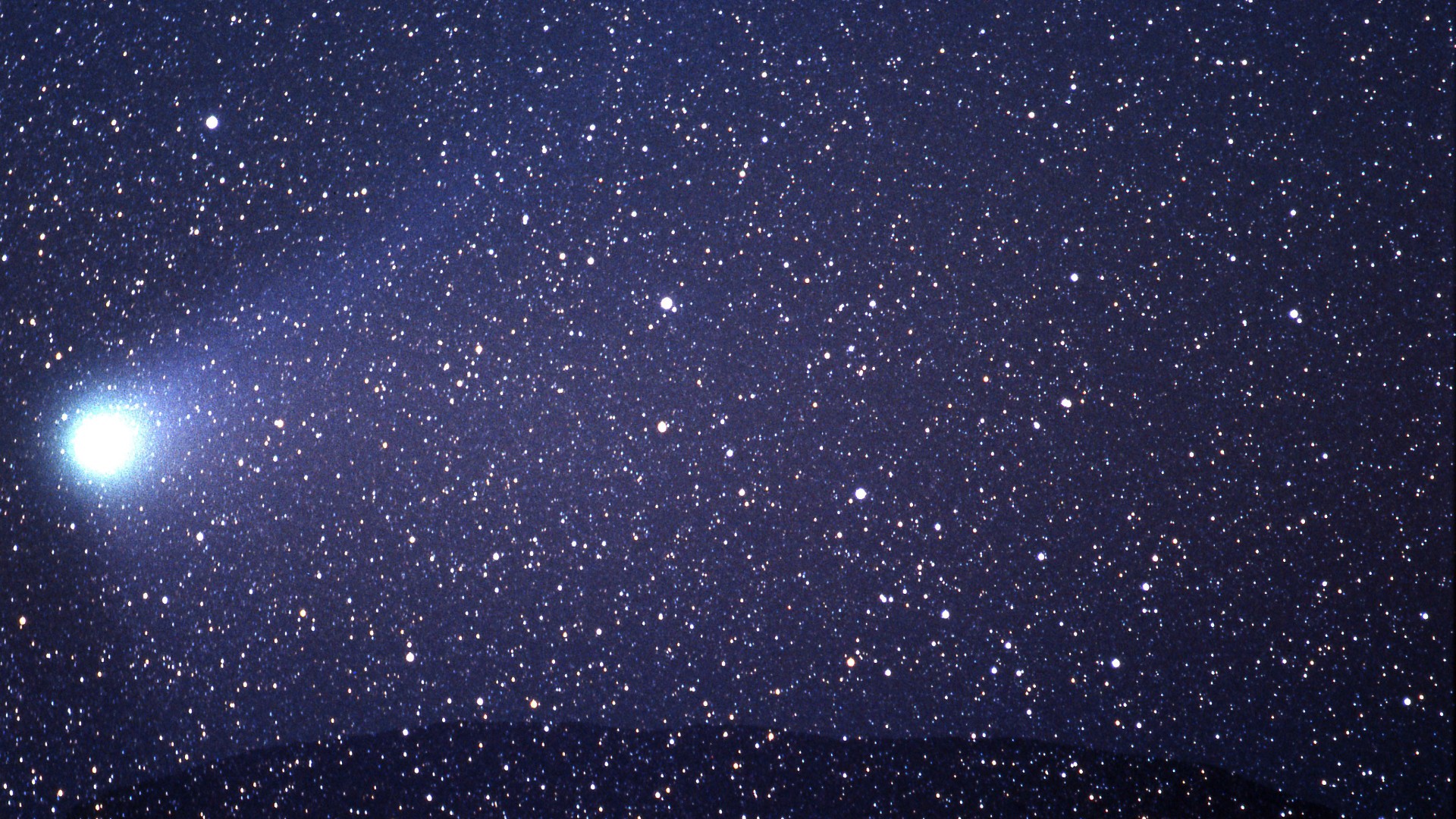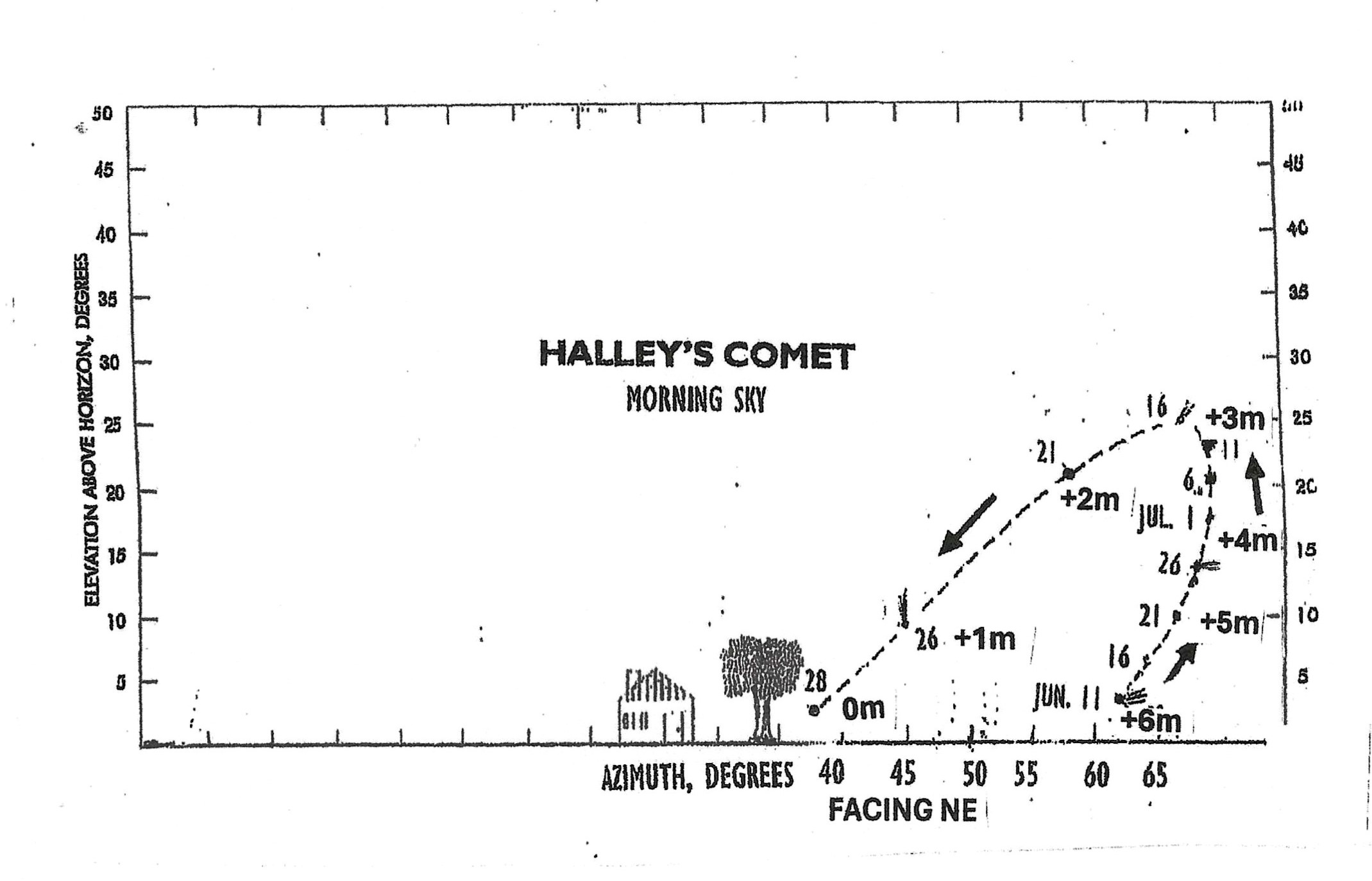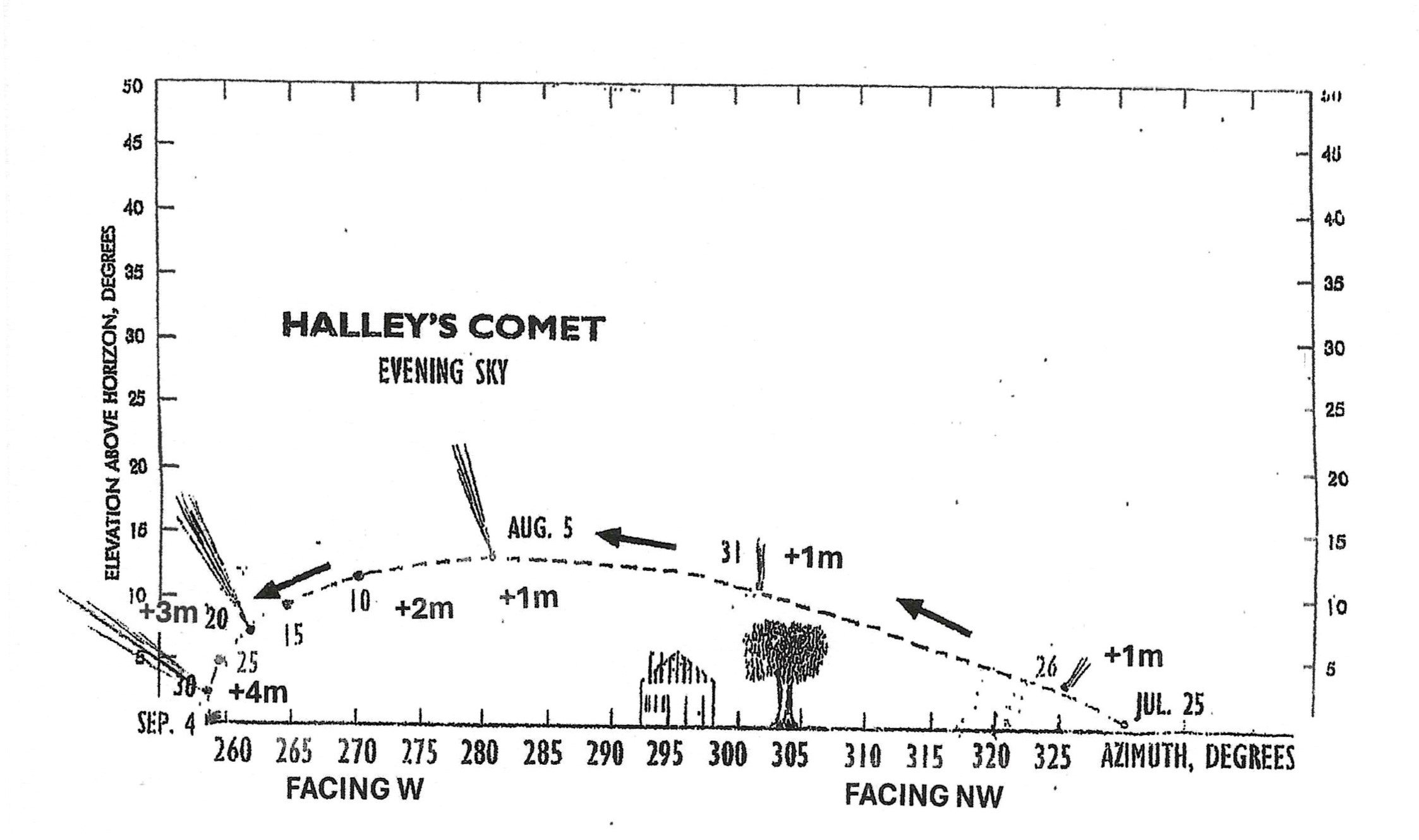
Beginning on Friday, Dec. 8 we can finally state with absolute certainty that Halley's Comet is coming.
This most famous of all comets travels around the sun in a flattened elliptical orbit that brings it near to the sun and then takes it far out to beyond the outer limits of the solar system. Ever since Feb. 9, 1986, when it arrived at perihelion — the comet's closest approach to the sun — it then began its long journey back out into distant space. And from that time up until the present, the comet has been moving inexorably away from the sun.
But at 8 p.m. Eastern Time on Friday, Dec. 8, (0100 GMT on Dec. 9.) that will come to an end. For at that moment, Halley's Comet will arrive at aphelion; the far end of its orbit — that location in space that places the comet at its farthest point from the sun: 3.27 billion miles (5.26 billion km) distant. The comet will be then be 472.2 million miles (759.8 million km) beyond the orbit of Neptune, the most distant known planet.
The last time Halley was at this point in its orbit was in April 1948.
Related: The Eta Aquarid meteor shower is the legacy of Halley's Comet in May's night sky
When Halley arrives at aphelion, its orbital velocity will have slowed to just 0.565 miles (0.909 km) per second; about 2,034 miles (3,272 km) per hour. Compare that to when the comet was speeding around the sun at perihelion on Feb. 9, 1986 at 33.77 miles (54.52 km) per second; some 121,572 miles (195,609 km) per hour.
So, after Dec. 8, the comet will again — for the first time in nearly 38 years — be approaching the sun. In concert with Kepler's second law of motion, a celestial body moves fastest when it is at perihelion and slowest at aphelion. So, once Halley passes through aphelion, its orbital velocity will begin to — very slowly at first — increase, on its way inbound toward the sun.
Get the Space.com Newsletter
Breaking space news, the latest updates on rocket launches, skywatching events and more!
In the table below, we note the times of when Halley will cross the orbits of seven planets as it moves inbound toward the sun. The mean distance of each orbit is given in astronomical units (A.U.). One astronomical unit is equal to the Earth's mean distance from the sun of 92,955,807 miles (149,597,870 km).
| Planet orbit | Distance (AU) | Date of crossing |
|---|---|---|
| Neptune | 30.6 | May 7, 2041 |
| Uranus | 19.2 | May 1, 2053 |
| Saturn | 9.54 | Dec. 7 2058 |
| Jupiter | 5.2 | June 25, 2060 |
| Mars | 1.52 | May 16, 2061 |
| Earth | 1.0 | June 19, 2061 |
| Venus | 0.72 | July 9, 2061 |
Halley's Comet will again arrive at perihelion on July 28, 2061.
Looking ahead to 2061
So, what can we expect from Halley's next appearance 38 years from now? With the current average life expectancy for Americans close to 79 years, if you were born after 1982, you have a better than 50-50 chance to witness Halley's return in the summer of 2061.
On its way toward the sun, during the late spring and early summer it will be visible in the morning sky and favor viewers in the Northern Hemisphere.
Interestingly, 2061 is the mirror-image of the comet's last appearance in the winter/early spring of 1986. Back then, the comet was out of sight and on the opposite side of the sun in midwinter; but in midsummer of 2061 the comet will be on the same side of the sun as us, in full view, and appearing at least 10 times brighter! Then it will rapidly drop down, and upon entering the evening sky, will gradually favor more southerly locations.
But for viewers at mid-northern latitudes the comet should still evolve into an eye-catching sight, albeit low in the west-northwest sky on early August evenings.

A two-month pageant
The main show begins in the morning skies of mid-June. On June 18, Halley's Comet will be positioned in the constellation of Taurus, 1.2 degrees northwest of the Pleiades. It will be rather dim at around magnitude +5.6 and it's unlikely that observers in good locations will see its bluish ion tail much longer than 1-degree; an artifact of its distance from Earth of 167 million miles (269 million km).
But the comet will be approaching both the sun and Earth with increasing speed, and so with each passing morning it will appear to climb higher into darker skies, and growing noticeably brighter.
By July 1, it has brightened to magnitude +4.3 with a short tail possibly a couple of degrees long. By July 10, it's 93 million miles (150 million km) from Earth, and will have more than doubled in brightness to magnitude +3.5. A week later, now hovering at around magnitude 2.5, the tail should appear more noticeable reaching about 5 degrees in length; Halley will be racing east-northeast across the pentagon of the constellation of Auriga.
On July 23, the comet's head is now perhaps as bright as first magnitude, low in the northeast dawn sky, with a short tail pointing almost straight up from the horizon.

By now, Halley will gradually transition from the morning into the evening sky and because it will appear to track some 21 degrees north of the sun at perihelion, from July 25 to July 28, it will be possible to see it against the late twilight sky as both a morning and evening zero magnitude object. Now its bright, white dust tail which greatly impressed our forefathers begins to unfurl.
Evening show ... Halley at its best!
As August begins, the comet becomes exclusively an evening object. Initially, its visibility will be handicapped by the presence of a full moon on Aug. 1, but by the evening of Aug. 4, the comet will finally shine unencumbered in all its glory in a dark sky, low in the west as darkness falls.

Indeed, Aug. 4 through Aug. 8 might well be the pinnacle of the 2061 apparition: The comet's head shining as bright as first magnitude, is now accompanied by a straight and narrow tail streaming outward for perhaps 10 or 15 degrees.
In the evenings that follow, as Halley recedes from both the sun and Earth, its luster will wane. Also, as it tracks southeast through the stars of Virgo, it will be dropping lower to the horizon: Magnitude +1.8 on Dec. 10, then a bonus awaits skywatchers on the evening of Dec. 18, when it forms an isosceles triangle with a nearly four-day old crescent moon and Venus; it now has dimmed to magnitude +2.8. Halley then passes within a degree of Venus on Dec. 24, having faded by then to magnitude 3.3.
Light pollution is the wild card
With the current average life expectancy for Americans now close to 79 years, if you were born after 1982, you have a better than 50-50 chance to witness Halley's return in the summer of 2061.
However, it is my ardent hope that over the next 38 years, we will somehow be able to find a solution to significantly stem the growing tide of light pollution.
If not, there is a very real danger of our being "electrically bulldozed" and the view of Halley will be obliterated by bright lights. And as such, our children and grandchildren could very well end up being denied their rightful opportunity to greet Halley for themselves.
In short: While we can provide a pretty good assessment of what Halley's Comet will do on its next appointed visit, as to predicting what the state of our night skies will be by then, is anybody's guess.
Joe Rao serves as an instructor and guest lecturer at New York's Hayden Planetarium. He writes about astronomy for Natural History magazine, the Farmers' Almanac and other publications.
Join our Space Forums to keep talking space on the latest missions, night sky and more! And if you have a news tip, correction or comment, let us know at: community@space.com.

Joe Rao is Space.com's skywatching columnist, as well as a veteran meteorologist and eclipse chaser who also serves as an instructor and guest lecturer at New York's Hayden Planetarium. He writes about astronomy for Natural History magazine, Sky & Telescope and other publications. Joe is an 8-time Emmy-nominated meteorologist who served the Putnam Valley region of New York for over 21 years. You can find him on Twitter and YouTube tracking lunar and solar eclipses, meteor showers and more. To find out Joe's latest project, visit him on Twitter.
-
djoybird Please spell the name of the comet properly before you begin to expound on the return of Haley's comet.Reply -
billslugg The official name is 1P/Halley according to the IAU.Reply
"Spellings of Halley's name during his lifetime included Hailey, Haley, Hayley, Halley, Hawley, and Hawly" - New York Times 5-14-85 -
STARPUNK Reply
Halleylujah! I remember in late 1982 when it was 'recovered' by astrophotos and now we have the means to see it throughout its entire orbit. And contrary to what the media said the last time, the 1985-1986 apparition was anything but a disappointment. In fact, I didn't see another comet that was that 'good' or even close to it until Comet Hyakutake 10 years later.Admin said:On Friday, Dec. 8, Halley's Comet reaches its farthest point from the sun and begins its journey back through the solar system.
Halley's Comet begins its 38-year journey back toward Earth tonight : Read more









